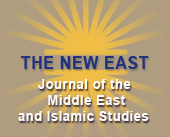Palestinian Hamas and the Algerian Front Islamique du Salut: the Way to Power
Chaim Shenar
To facilitate their access to discontented populations, Islamists in Algeria and in the West Bank and the Gaza Strip created frameworks that combined religious and non-religious issues. Through this, they sought to achieve broad support among those who did not seek an Islamic transformation, but rather only hoped for a change in the status quo. The Front Islamique du Salut (FIS) utilized the language and symbols of the revolution, thus attempting to be a symbol of the struggle, claiming that the regime had illegally taken over Algeria’s historical memory. Hamas, on the other hand, utilizes national Arab historiography that states that since ancient times, all the inhabitants of the Middle East were Arabs, therefore refuting the Zionist claim regarding the Jews’ rights over the Land of Israel.
Both movements – Hamas and the FIS – made good use of their social networks, in the mosques and in the social media, in order to emphasize the discrimination seen in the barriers to social mobility, lack of political freedom, economic hopelessness, cultural vulnerability and humiliation.
Significant similarity can be found in the ideology, the objectives and the socio-economic conditions in which the two movements – the Hamas and the FIS – developed.
But there is a marked difference in the political conditions in which these two movements evolved, and in their means of operation. While both movements accumulated power in similar ways, their immediate goal was different. Hamas aspires to establish a Palestinian state in the West Bank and the Gaza Strip, while the FIS sought a democratic takeover. Both movements’ victories at the polls – Hamas in the Palestinian parliament and the FIS in the local elections – stem primarily from their organizational abilities and their flexibility in coping with ever-changing conditions.

